https://www.youtube.com/watch?v=6IECUV-wNo8
[New] EVERY CUBE EXAMPLE SOLVE
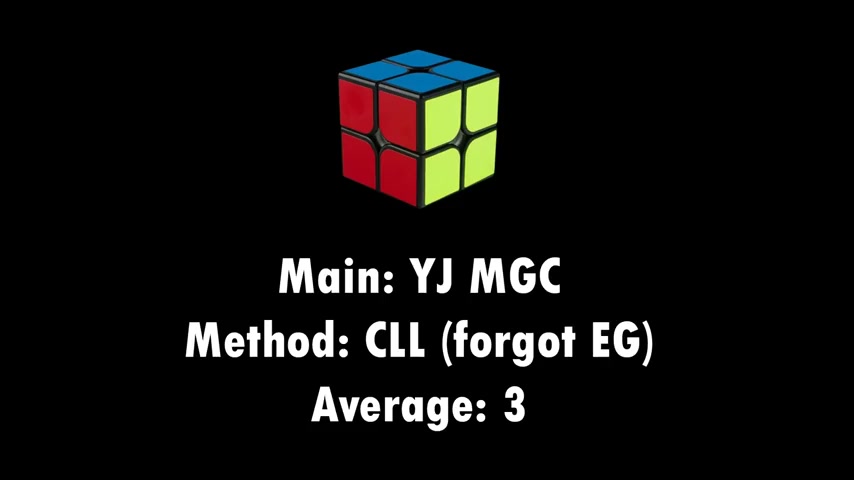
I did say I was going to do it again one day .
Uh What years of time can do to you either you can make a lot of progress or you can forget your algorithms .
What I would do here before is just insert this white piece .
This is a really easy case and you just solve the rest in one algorithm .
That's what I would do if I remembered the algorithm .
But what I would do today is just insert this corner into the correct spot and insert this one into the correct spot , which is still pretty fast and I got AC LL case and just hope is one of the three by three ones that I already know that was embarrassing .
OK ?
I really hope I got better at three by three .
So in this case , uh the white cross is probably going to be the best one because I can set up red and green to go in like this .
So with orange already here , then I would just move orange with AD prime and then I can put in red and green together .
I would then put in blue , which can be done with a wide U prime and then L two .
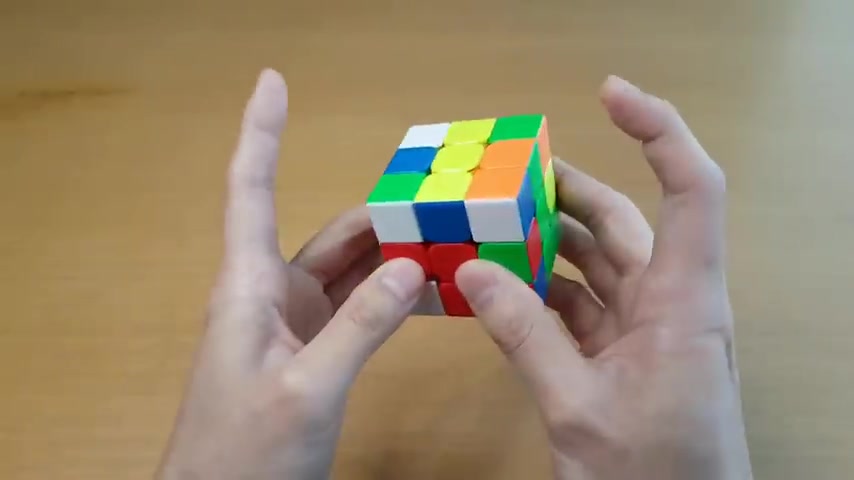
But I don't immediately do L two here because I've noticed from planning earlier to try and find my first pair instead of L two , it's better to do L prime and this sets up and then you can take it out and then continue L prime .
Then as I insert this , I notice that these two or these two can be my next pair .
So I will just do the rotation and insert this and I'll show you how I would have done this one .
It's a pretty funny trick .
Uh So here I can go straight into a wide move here .
And the reason is because it lifts up the M slice because one way you can solve this case is with M slice like this and then like that and it pairs them up .
I just think it's really cool .
It's uh probably just like tied for fast with what else you could do then I have these two and this one .
But this is the one I was tracking earlier because I saw it at the same time as I saw this pair .
So I will go into this one next , which is rotation less like this .
Oh Would you look at that ?
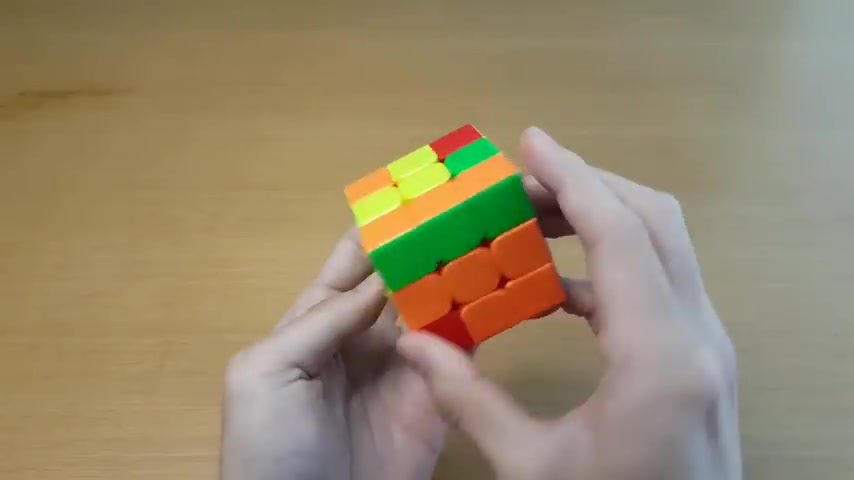
It pairs up the next one and I can insert it with hedge like that .
And then OK , I did not expect to be getting a ZBLL that I knew I barely know any .
But now you can think that I know full ZBLL that made this whole video worth it .
I have four by four , my next competition and I decided to actually practice this cube for one .
And so I switched to the MGC because sometimes switching cubes just makes me better .
And I don't know why I can start with any center on four by four , but I will usually go for white or yellow if it works out the best .
So looking at white , we have a quick one move bar right here and then the other two are right here and then looking at yellow , uh we have a quick one move bar here and the other two are right here .
So this actually is a little bit better on yellow .
How I would do this for yellow is uh make that bar and then combine these two in a way that they can go in right here .
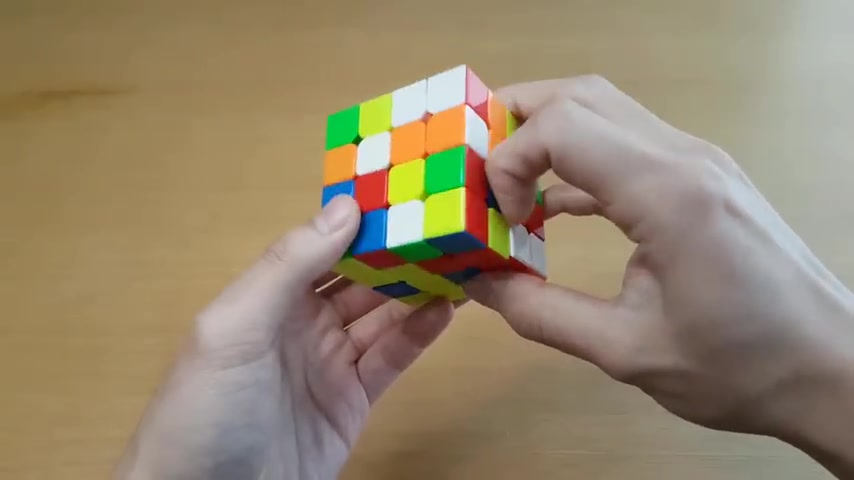
As I make this yellow center though , I want to see if I can change it up a little bit or add moves in order to make the white sensor better .
So how I'm going to do that is the same moves from the start , let this , let this and like this .
And then before doing white R prime , I'm just going to insert a V move because if I don't do that , it ends up like this .
But if I do that , it ends up like this , which is better .
And during that I should have tracked where this and this were and I will just pair them up now just like this and then insert it up to here .
And now next , I'm going to do white edge pieces .
So I will take a look quickly at what I have as I'm inserting this and here's the two orange pieces .
Now as a lot of , you know , I do everything mirrored .
I do lefty stuff .
So if you actually watch this , it's not going to be the best habits for you .
So now I will flip the video , the color scheme is gonna look wrong , but you're gonna see this is now my right hand and this is now my left hand , which is going to be how you should be doing things .
So I will solve these two like this , which gives me visibility of a lot of the other pieces .
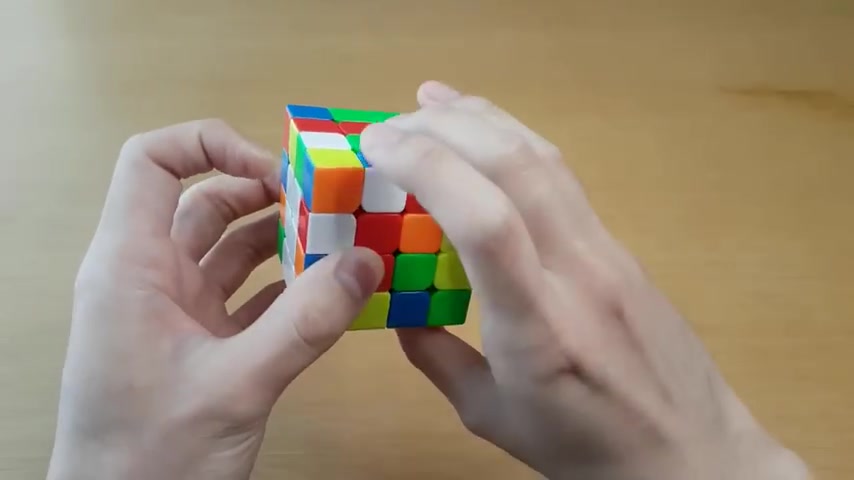
Here are some blues , here are some greens and then I will insert the orange one right here and then I will do blue uh red's better , but I noticed the blues first .
So I will just do blue first while tracking the reds and then blue goes here .
Remember color scheme is going to look wrong .
But this is the correct way for me now and then red and red , left and right side put them together .
And luckily that also got green for me .
So I'll just put green in actually .
And the way I do this is , if I have four edge pieces that are done , which I usually do , then I'll save one on the other side and attach it to a center bar .
All right , then it's really important during four by four centers to track things that you're going to be looking away from .
So as I saw the blue center , I noticed that this is at the bottom left and then as I look for the other blue center bar , I see it right here .
I don't need to take a second look at this one .
I already memorized where it is .
So I will do this , put it here .
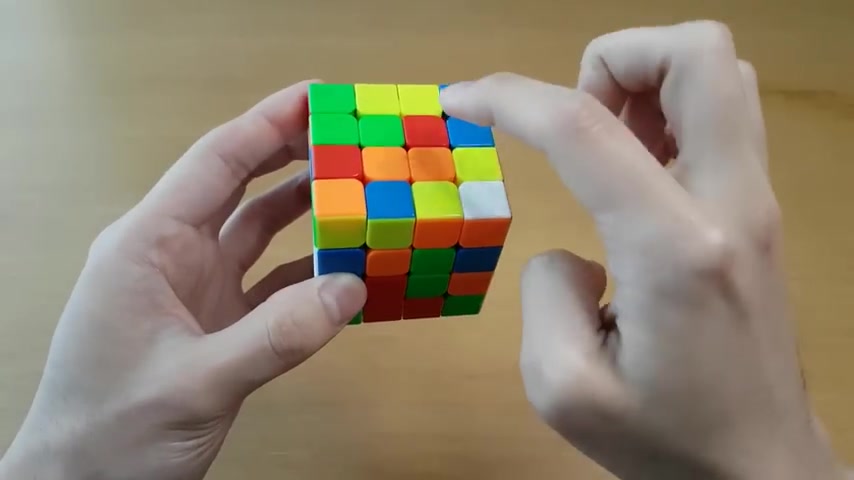
And as I'm doing this , I'm already thinking about the next center which above blue would be red .
So I will align this to be put in .
But instead of just doing yr prime , I will then align the next center to come here .
So now here's my red center bar , then here it is red .
So I'm good enough at four by four that I've already planned out how I'm gonna solve this entire thing into here , which means I will then look at the next color , which is green and I see this one right here .
I don't see the other one .
So once I see it , as long as I have this one memorized , I won't have to look at that again .
So I solve red like this and notice the green is at the bottom left and then insert red and knowing that green is at the bottom left , I don't need to go up and look at it again .
I know that since this is like an arrow pointing at the bottom left , I'm good to go and just insert it like that .
And then I can solve this piece and there's my cross and centers next .
What I do is a slice move in this direction .
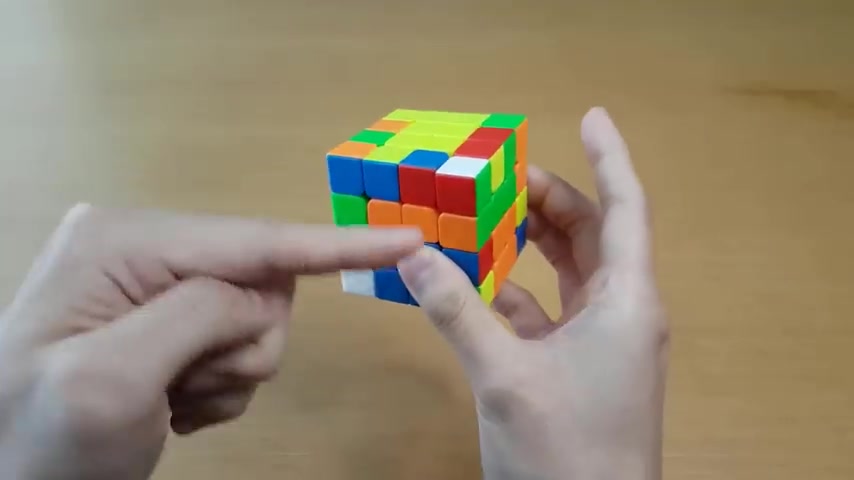
And then I will take one of these two usually and try and solve the corresponding piece .
And this is 323 edge pairing .
So if you don't know how it works , I have a tutorial right there .
So here I will start by looking for orange blue and I see it right there .
So that's easy .
Uh Then as I insert orange blue , I want the green , orange at the next spot .
So this , when it slices back will pair to here .
So this piece right here needs to be orange blue .
So I insert orange blue over here and I'm inserting into the back .
So I have visibility of the front here is the orange green piece .
So I need this one right here so I can take it out and put it in here .
Looking ahead to red blue .
Then I put red blue right here and I slice back .
All right .
Now I have three edges made and I have here .
This is yellow blue that I'm gonna solve next .
And I can solve it into either of these two locations .
So right here , yellow blue , solve that .
And when I slice back , the yellow green is gonna slice back to this spot .
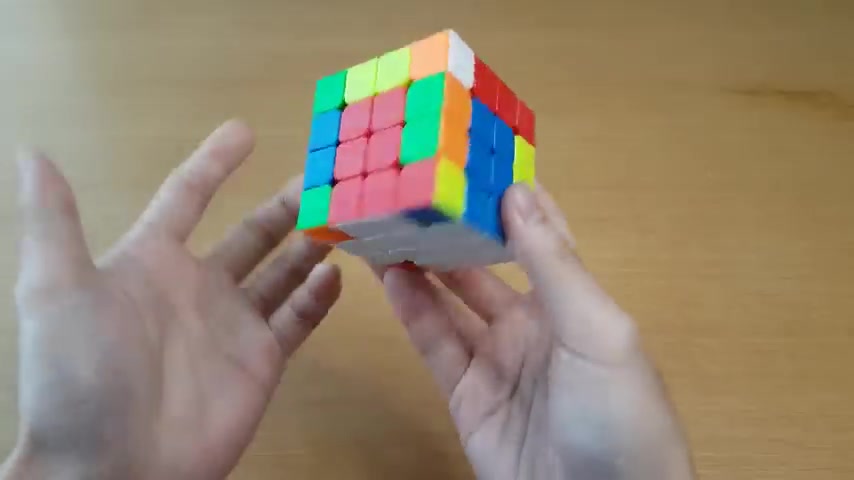
So yellow green right there and slice back .
Then I need red green , which was this one slice .
And then I need yellow red here when I slice back and that is the reduction stage , the rest is just three by three and pa but let's see if anything interesting happens .
So first I will solve these two and then these two , which I was looking ahead to .
Uh now I see these two as I solve it .
So I will so oops lost it .
This one and this one with keyhole and then these two OK .
I already know there's gonna be parody now .
So let's see what happens .
And here I can do sledgehammer before starting the parody and then insert this pair and that's just a faster way to skip oll .
OK .
Now , I have a V perm with no parity five by five .
OK .
Something I actually feel like I'm really good at for five by five .
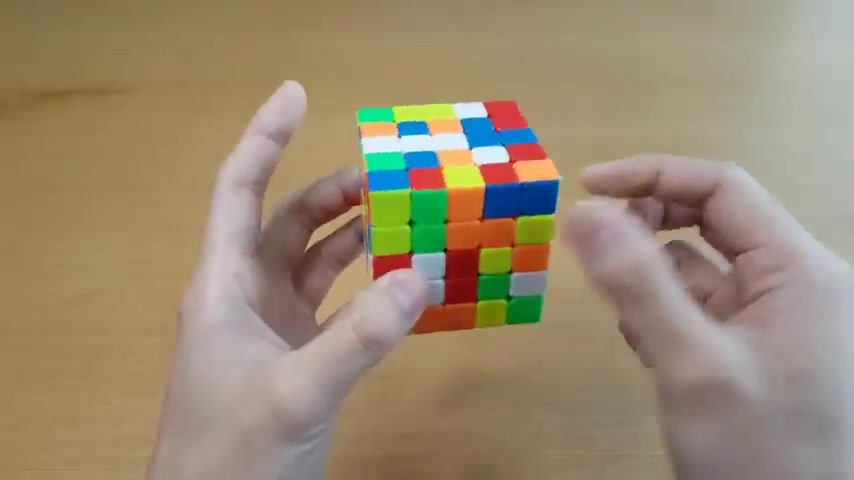
I start with any colored center .
But if you use yo like me , but you cannot do color neutral for the three by three stage , then you should start with white or yellow .
So how I would start this one is with red because that's just such an easy two bars .
But how I will start with this one just for the sake of the example solved is I'll start with white .
So there are a lot of patterns that are very good for making your first two by three .
And here I would just start it like this to make this pattern .
This fish pattern is great because you can connect the corner to any one edge like this one and it will just make your two by three .
But from inspection , I noticed that we have this one on the opposite side and you want as few pieces in the opposite side of your starting center as possible .
So I will use this one instead to finish off this two by three .
And then I have this one here , this one here and this one right here .
So I just need to align the corners and then align the edge with it and join them all together and then I can put it up here .
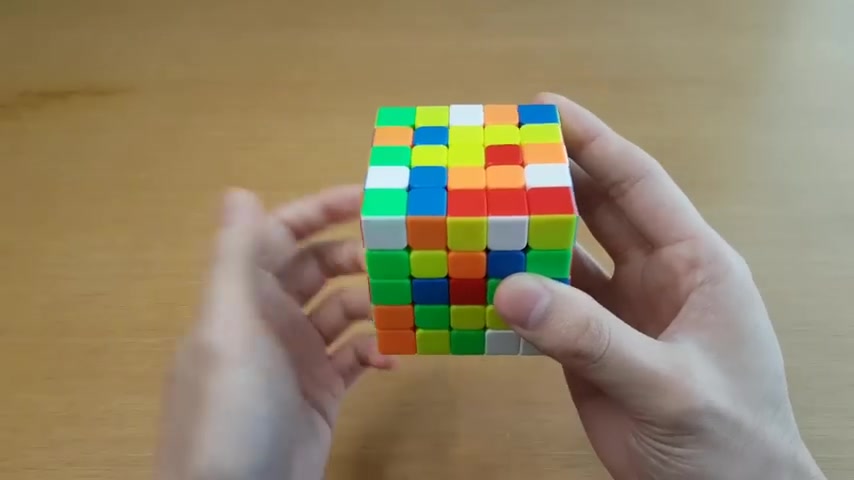
Now , before I do that , I just want to make sure that my yellow center is turning into something good .
This is good because I have this one here as well .
But just in general , I would try to make that into this instead .
So here , I would then take this one and pair it with this and notice how I can do a wide U instead of just a normal U because that joins these two .
And then as I insert these , I will then look at this and join them all together .
And then move it up here .
Now as I do this again , I am going to mirror the video because I'm doing Yao again , the part where I make the three edges here is the hardest for look ahead and I will try my best to looking through my camera .
So here's the two white reds and I noticed none of these that I can see are white red and uh this is the only one I couldn't really see the color of there you go , white red .
So I will join them together and put them in here .
And then now I have these are white blue .
So I will put this here and this here .
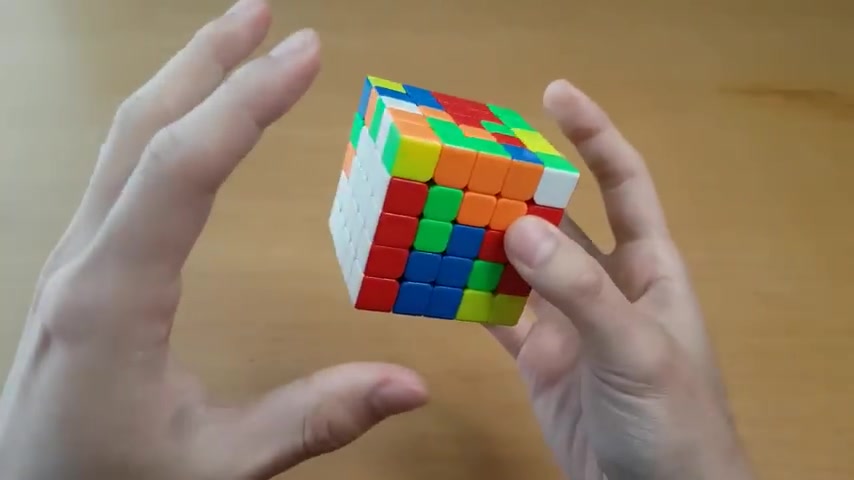
So this pattern with a flip flip , the blue ones on top and then like that and put it here again , the color scheme will look wrong because I am flipping the video .
OK ?
Now we have white green .
So here these two white greens .
Um I think that's the last white green because it could be part of it , but it also could be orange and I'm not entirely sure .
So as I do these , I'll just flip up and now I see it actually wasn't , it was this one .
So I'll place these all together like this and I noticed this one ended up on this side .
So I want this one to be on the right side afterwards .
So here it was my red , join them all together and this one needs to go on the right side as I look for the last piece and there it is .
So next , I would just keep this on the right side .
Same idea as what I showed on four by four , red looks like the best center T is a great shape .
So I will just attach it like this and then you can put an edge center into here to finish off this .
T I didn't see any other red pieces .
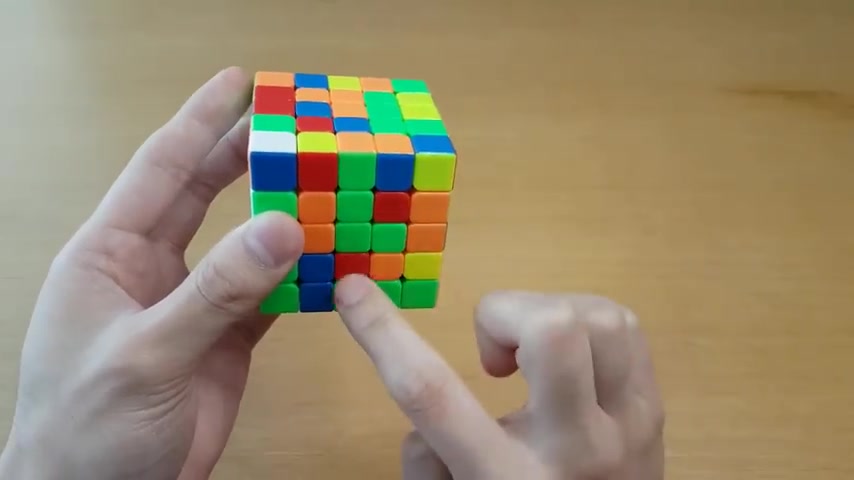
I'll just go to the other side this , this and this can be put together like , well , OK , I'm gonna do it differently than I thought I was gonna do .
I was gonna do it like this , but that does break that green bar .
I had , I mean , this is still a good case but I would not have known that .
So um how I am gonna do it instead is just join this and then take these and solve it like this .
OK ?
Then I still have this green bar which I think should be good .
So I would then just insert that green bar onto this side to make my T shape and put in either of these edges .
OK ?
Then I'll line up this edge with this corner and see where the last one is it right here .
So then I would just join these altogether , align it and do this .
There's a nice T shape for orange as well .
So uh I would do it So if you do it like this , you end up with this case , which is not good .
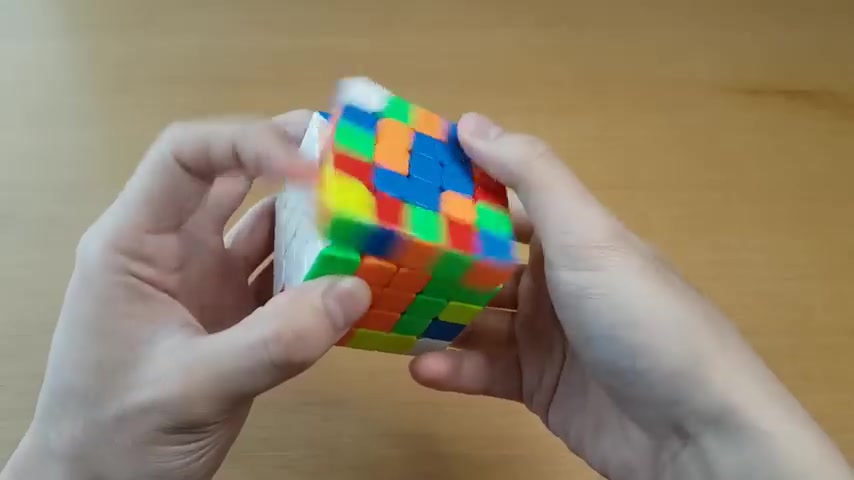
So I would instead do it like this and then this gives a slightly better case .
All right , then next , insert this and we have our cross and centers .
Next , I would use free slice to solve any four edge pieces .
And I see these two which is good , but I don't see the last one right away .
So instead I'll just work on something else and this can be for later .
So I have yellow orange , these two .
OK .
I'm trying not to like look at the back and I've noticed so it could be none of the pieces up here .
But I noticed this one could be the last one and so could this one .
So I'll just do D and react there .
It is .
But if it wasn't this one , I would just do D again and it would be the right one for sure .
All right .
Now , I still have that blue red as an option , but I haven't seen where the blue red piece is , uh looking at it and now I can see it's not this one .
So it must be this one .
But uh the first thing I noticed was this yellow blue .
So I'll just do the yellow blue instead , the other yellow blue is here .
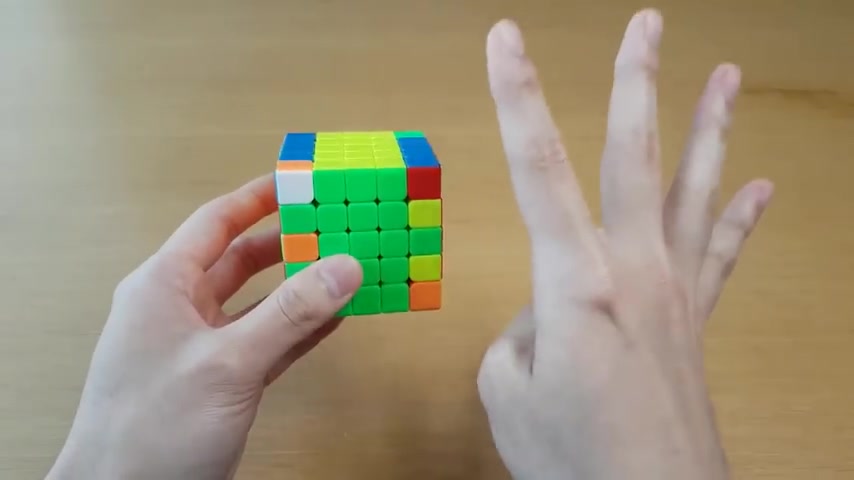
So I'll just move this one in and when you have to flip something , it doesn't matter how you put it in because you can always just pair up the ones that are good together and flip the last one and then I can then put them together .
There's my red blue so I can combine it with this up here .
And lastly , what can I do ?
I have a yellow green here and the other one's not on top and it's obviously not one of these .
So it must be that one .
And again , thinking about all that really fast is hard .
But as I'm making this a lot of it should just be muscle memory and it gives me time to think about what that piece must be .
So yellow , green and yellow green here , combine them with the last one .
Don't even need to look that has to be correct and then replace it with something unsolved .
Now I fix the sensors and that ends the free slice stage .
After the free slice stage , I solve the next four edges with cycles .
And that is the four edges currently in the middle layer .
I want two of them to come out into the top layer .
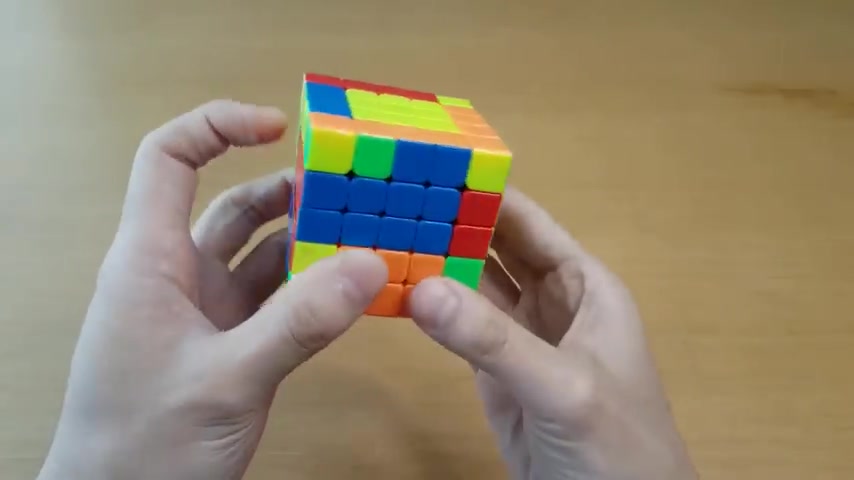
But the other thing you can do is always just solve F two L pairs because you'll have to do that later away .
So this one is great as I solve it , I actually just take two out like that .
So that's really convenient .
Next , I have uh these parts to work on .
So how I would do this is uh for example , like this , I have the red green here .
And these , and after I solve this , I'll just cycle or solve things that are still here .
So here I have the yellow red I can solve next by putting this one in and when I slice back it solves um Now I have this and this , this was a pretty lucky case that after one cycle , I'm down to my last two edges .
Then for every last two edges case there is an algorithm you can do um you can do it intuitively as well by solving one of these and then parody .
But how I would do it is just take them out and then do the last two edge algorithm .
Uh I'm talking now and I kind of forgot how the algorithm goes .
Uh OK .
Good .
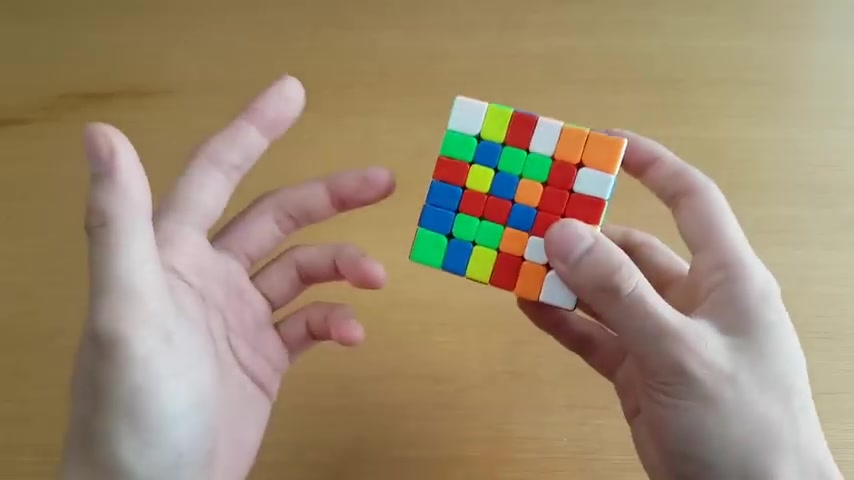
I didn't mess it up .
Next is just three by three stage .
Again , I have one pair already solved .
And so I'll just do red green .
You're gonna get a lot of three by three examples .
OK .
This is lucky this pair and then this pair .
OK ?
And then Oll and PLL I tried really hard to get the six by six ramble , correct .
And I did .
But you can see why they have a rule saying in competition , you don't have to get it correct .
Same deal as five by five .
I use the Yao method .
But I'm going to say that on six by six , the popular opinion is that reduction is a better method than yaw .
It doesn't mean reduction is better than yaw .
It's just what most people think .
And I use the Yao method .
I'm going to go a bit faster for six by six and seven by seven .
Because if you actually speed , solve these , you should have decent grasp of the things I'm doing .
I'd start with the yellow sensor .
I just need this and this to join together .
So I'll move this away and then move this up .
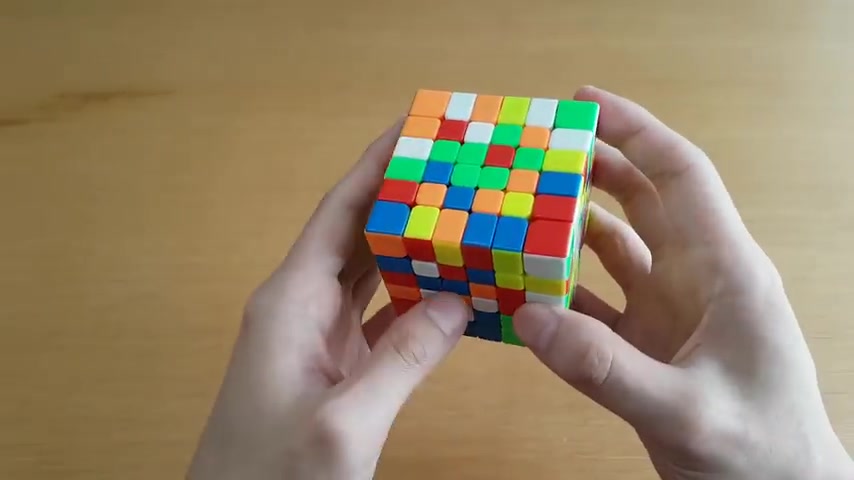
Then I have these , which I can reorient all like this and then join this one with it and move it over here .
Now I'm making outer bars , the inner bars are usually better to make first .
So just as I go around , OK , I notice there are only corners .
I forgot to look over here .
So I will join these two and then use a corner to take it down , join it with another corner and put it into the center here , then join these two while looking for more pieces and join them all like this , then move it over here .
And since I have this , I noticed I might as well add an extra move right here to make that bar right there .
All right .
Then I will insert it down here like this and uh I could do this to make a little T shape and join it with this one .
All right , then I'm gonna make another inner bar because again , better to make inner bars first .
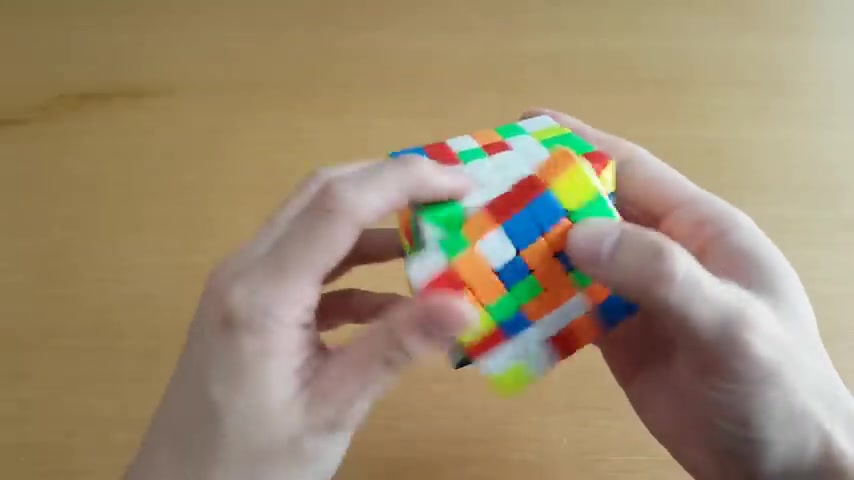
These three can be reoriented like this , join this one and do this .
OK ?
I noticed this is a bottom , right ?
Sorry , the video is not mirrored , this is bottom left .
If I'm looking at it like this or top , right , if I'm looking at it like this , I'm going to memorize the location of this so that I can join it with these and I don't want this corner to take its spot .
So for example , I could do them like this .
And then when I put these together , it will all work out .
All right , next is the edge pairing .
So again , I'm going to flip the video and now I'm gonna look for edge pieces .
Here is white green and here is white orange .
So I guess I'll just start with white green .
Here's another one .
So I'll just put the two that are correct together and flip this one with a double move and uh here's the last one .
So join them like this , put them here and I found white , blue , white , blue and last white blue here .
Put it here and then here is white , orange .
I'm gonna do that as my last one .
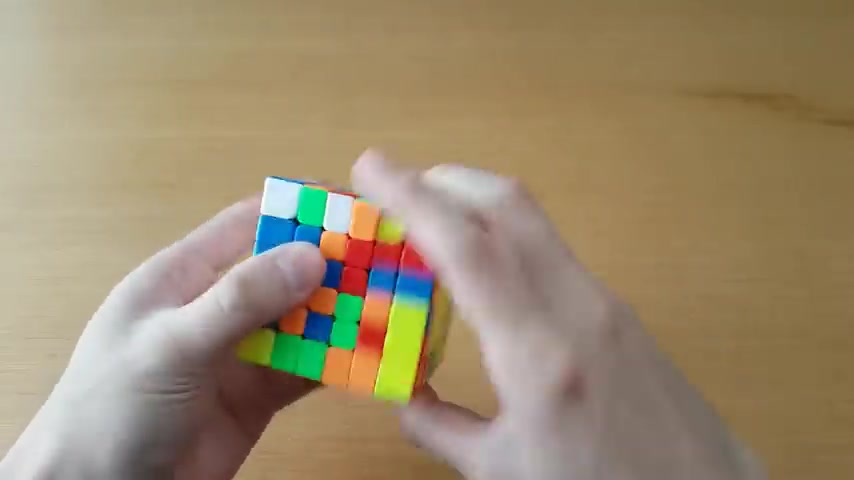
Flip that to put this one with it .
Then for the fourth cross edge , if it's easy , I'll do it .
If it's not , then I won't do it .
I'll just show what it's like if I don't do it .
So here I'm going to just start working on the centers .
I have a green partial bar here so I can join it .
Not with this because that looks pretty good .
I'll join it with this one and then I will join uh this one with this one right here and then with this one and put it all here , but just do this first so that this doesn't get broken .
So I'm always looking ahead to what I might be breaking by doing the moves that I wanna do and then preserving them .
OK .
So make most of this green bar and put it in like this .
Next up here will be orange .
That's a lot of blue , but making an opposite center next is really bad .
So I'm just going to work on orange .
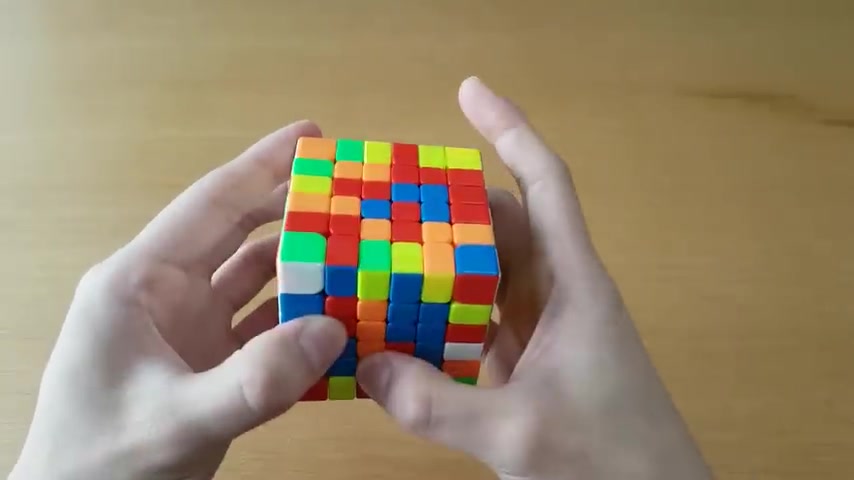
Next , I can take this and join it with this partial bar and then I can take this and join it to here and uh take this one , put it here and then move this all into the center next um this ugly pattern , but you can do it like this and then join it all to the bottom .
And here I will take this corner , put it here and then take the edge , put it here and put this all in like this and just add some moves here to get this bar like that .
Now , I need uh these two with these two very important to be able to quickly spot all the pieces you need and just solve the whole center bar as one algorithm .
All right , then I will take this , this , this join them all together and put them in .
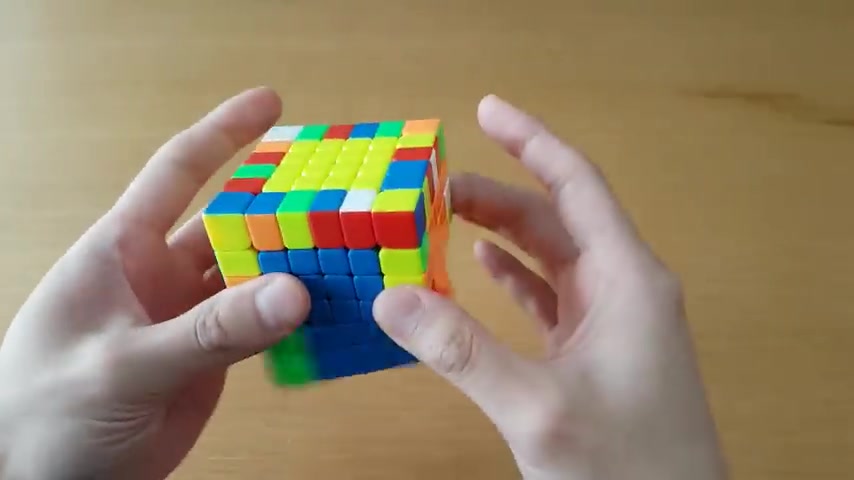
Then solve this one with a commutator solving it like red goes to here and then other layer up then down and other layer down .
Now I'll just make sure there's no white piece right here because I don't want it already in the cross .
Then I'll just solve the other white red .
So here , this one like that , this one like this and then this one like this , then I'll just put it into the cross and next uh I see a couple of pieces but I'm gonna go for yellow , orange because I can see all four of them .
So I'll just join these two and use the last one which was right here and replace the one that needs to flip .
Then I can put this one in here and get that one back down .
Uh Next I could do orange , blue , orange , blue , orange , blue and this one I see yellow red .
Uh Where's my last yellow , red ?
Not up here .
OK .
I found it at the bottom here .
So I can flip either one of these .
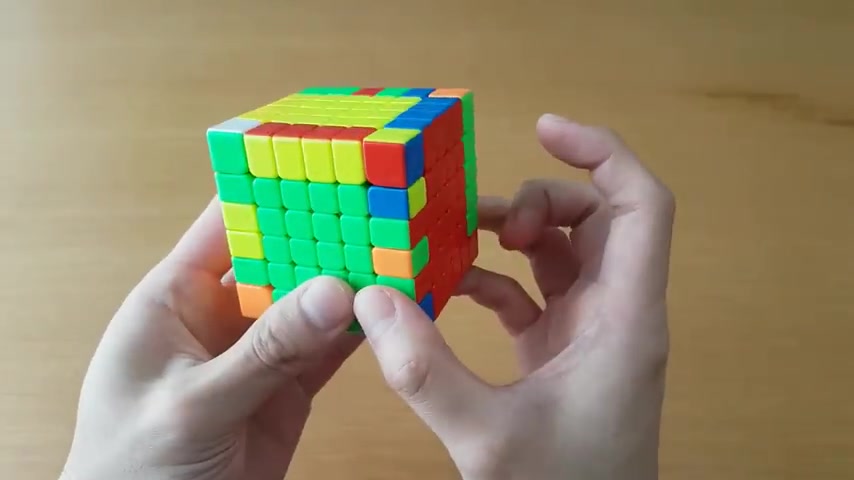
Remember that you can always flip either one and you don't have to flip any one in particular .
All right here it was a yellow green .
That one might also be .
It's not .
Where is it ?
Oh It's up here .
I'm blind OK .
And then fix the centers after four edges .
Now , if there are convenient F two pairs , I will solve them .
But uh if not more , then I would just take a solved edge and put it there as well .
Now , I have two edges here and two up here .
And I can start solving with cycles so I can take this one , move it here and solve this .
Then when I slice back , uh I either want to solve this piece that I sliced away or solve some chunk of this one .
So I'm just gonna solve some chunk of this one .
So I can put the yellow blue right here and slice back then uh I have this and this .
So I can do this , put the red greens opposite of each other .
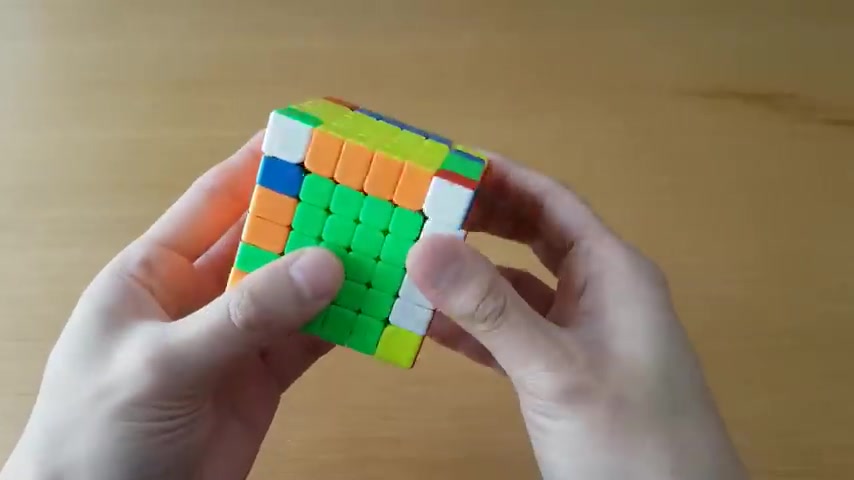
And then I can do a slice like this , flip this one and slice back .
And the reason I didn't inner slice move is to save one of the pieces that is already solved here .
Uh How would I do this ?
I can flip this one and then solve the red green , put the yellow blue here so that it goes back like this .
And now we just have a last two edge case and it's just like five by five where you can solve it just with an algorithm .
I think this is the same one I did .
All right .
Didn't mess it up and then I have just F two L now and no parody .
That's nice .
And J Perm , oh , my turning on six by six is so ugly .
Ok .
I tried , um , this is the scramble .
I tried to do and you can see , I actually got kind of close but I didn't get it and maybe you can try it .
And if you make the same mistake as me , then you'll get my scramble .
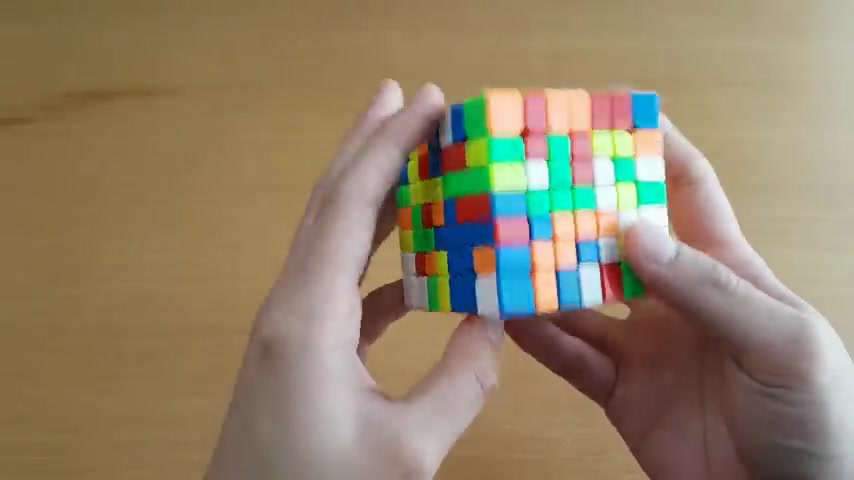
I will not be doing white , yellow for this one because I noticed something really nice on red .
And that is just this block and combine it with this .
And there is a two by two by three really , really quick .
And that is a super great start to a seven by seven solve .
Then I have these two and this and this so I can join all these up for a center bar .
I try to make this as soon as possible .
But the only reason I didn't right away is because I saw something really lucky I could do instead right next , I'll try to make this more inner bar .
The inner bars are always better to make first so I can take this and this combine them while looking for other pieces .
This one , I remember which spots are available , bottom left , this one is bottom , middle , then oops just move it up like this .
Take this one , put it here and this one here , this one here and this one OK .
That's the red center pretty good .
Now for the orange center .
Um middle bar again , first , if convenient .
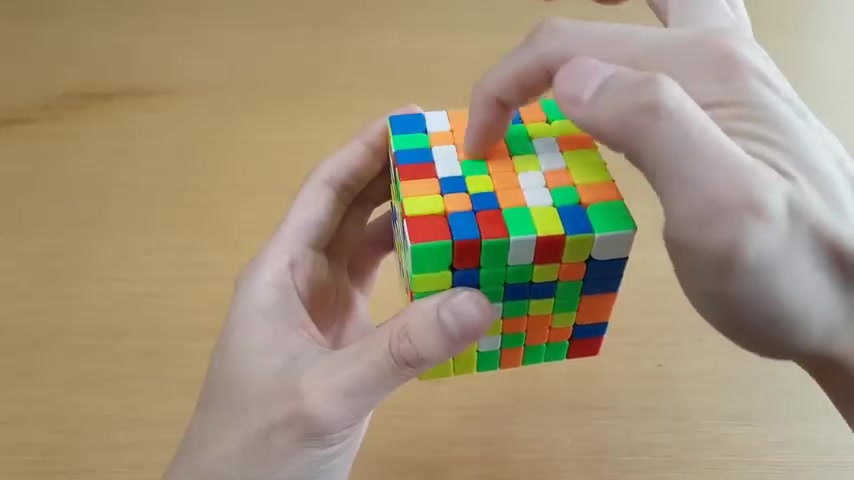
So I can take this one and I can take this one .
OK .
This can combine with this part .
So I'm gonna do it like this and then uh oops combine this one .
All right .
Uh We have some nice outer pieces here .
So I'll just go for an outer bar first .
I would not default to outer bars , but if an outer bar is convenient , I will do it this time , I'll move it up right here because it takes these pieces down , which is more likely useful .
OK ?
And then just making this inner bar gonna take this one and I could join it .
That's what I was going to do .
But thinking about it , that's not what you should do .
You should just do this and then join it now .
Ok .
During that , I notice a lot of red blues which um I actually never do orange as my cross color .
I do red .
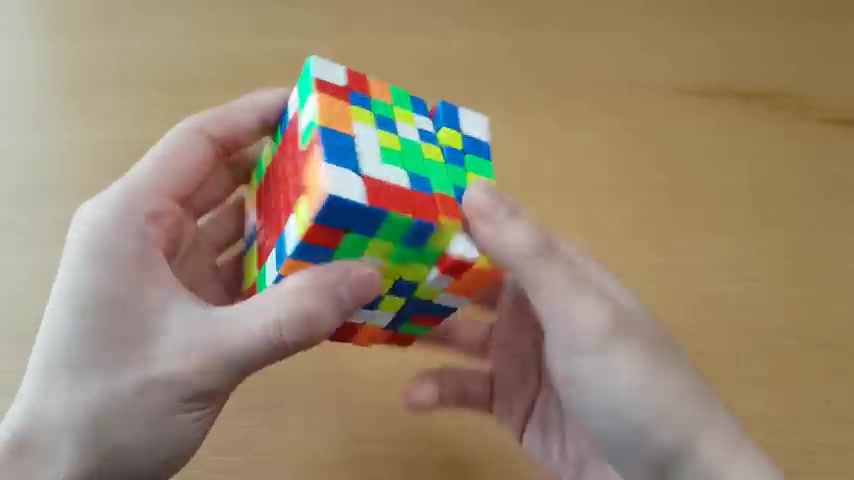
So here's a lot of red , blue and um here where , oh , there's my last red blue .
Ok .
Then I found red , yellow is a good next one to do .
So I'm gonna put this right here and do this , this red yellow and there's my other red yellow .
And uh I have two more right here .
Oops .
And then I will do what ?
Next there we go .
That is the three cross edges .
Then again , I don't do the last one because on seven by seven or the bigger cube .
It is the more inconvenient it is to have the last one just floating around on the other side .
Here , I've made the middle and then here this , I'm combining it with this and then I will combine that all with .
Uh let's just combine it with this one and move it all down .
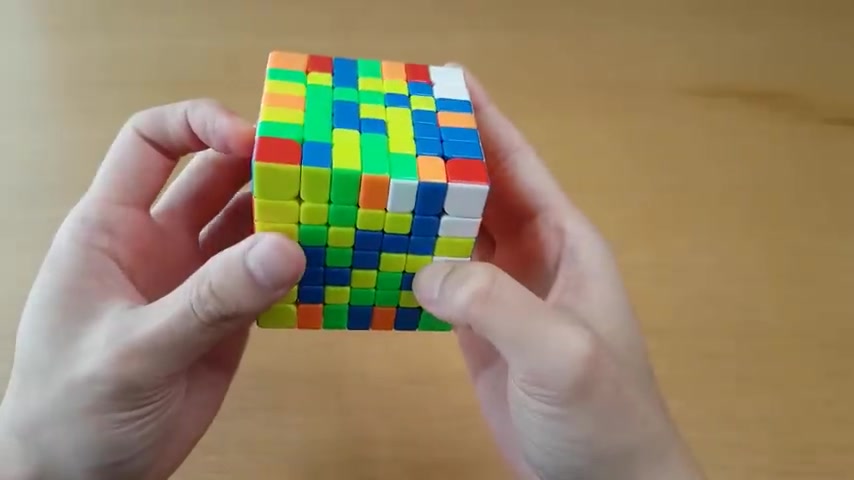
Then I have uh this and this and then I can combine these two with it and then put them all down here .
All right .
Uh This nice lucky bar , move it all up and this one can combine with these and then this can go right here and just join it with the bars down here and like that .
Next , I have blue .
Um I , I could make this bar right here first because the middle bar is not even close to done .
So I could make this little part here and then join it like that .
Oops .
And then uh middle bar now probably is a good play so I could uh do this to get these two and then uh here I can move this bar away and then put this one in .
All right , then uh this is annoying .
This one it needs to go here .
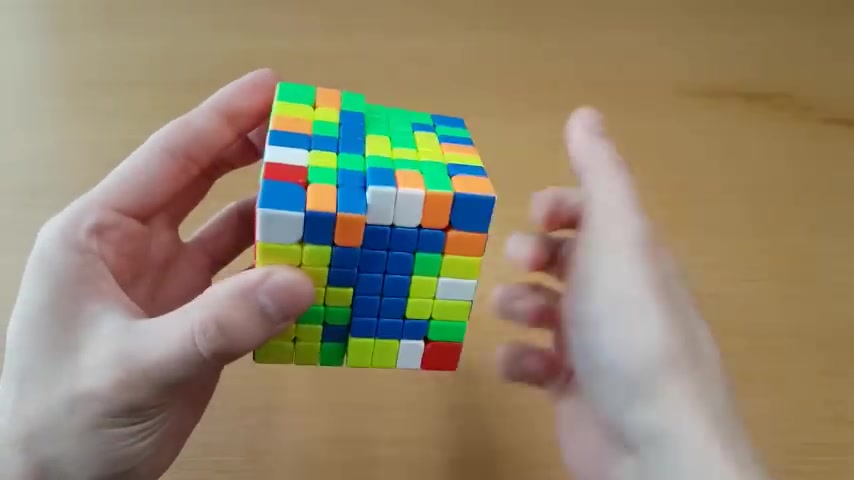
Uh I'm just gonna remember that and I'm going to take this part like that , then do that .
OK .
Next , I have these two which I can join with this .
Well , I shouldn't have done that .
I should just do all of these together and then join it with this one and put it all on the left side , the right side because it's mirrored and then take this , join with this and join with this and put it over here .
All right .
Next , I'm gonna make a middle bar .
I just like this .
And then these three and these two , there may be something more convenient up here sometimes .
But since these , I can already see from the bottom , then I can just do it .
Oops like this .
OK ?
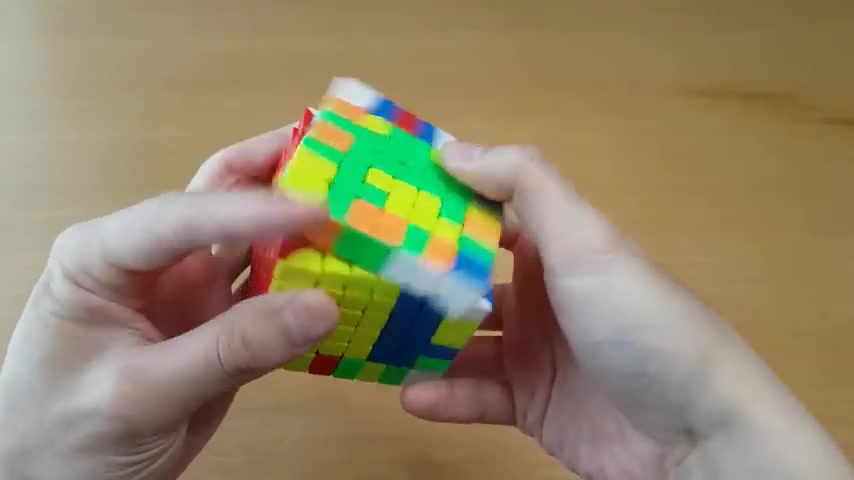
And then uh this with these and put it in the right side , I mean left side and then uh this , this and this can join together like this and then I can take this one , join it with this part and then this like that there's a bar , then this one would go with this corner and then insert it and then I would solve this one into here and then solve these right next , I would make sure there is no red in the bottom here where the cross piece would go .
So I can just do this and start solving this last cross piece .
There's a flip , put this here and then put it all in the cross like this .
All right , obviously , yellow blue has got to be the next thing that I do .
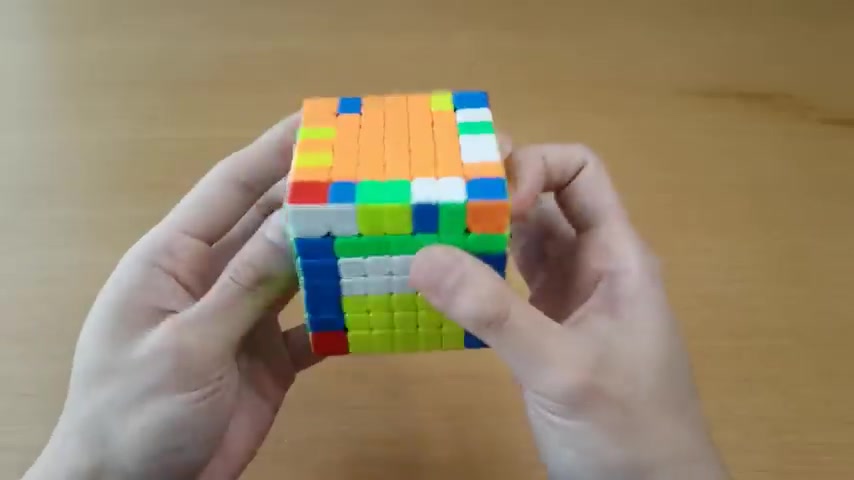
So there's a yellow blue right here .
And the last one is right here .
I noticed it couldn't have been this one which is why I looked to this side .
Then I have white green and last white green is right there .
I have white , orange is a nice next one to go or orange blue , but I saw white orange first .
So I'll just do that one first and uh yellow green , probably good next one to go with .
Just kidding , orange blue .
That's why you look around .
Sometimes you just get very lucky on seven by seven because there's so many things that can happen .
All right .
Uh Here again , if convenience , I solve F 2 , 12 pairs .
But I don't immediately see how to solve the uh this one or this one with no , not worth solving F 12 pairs .
So I just insert some edge here and some edge .
Well , now it's convenience .
And then , so I have two edges solved on this side .
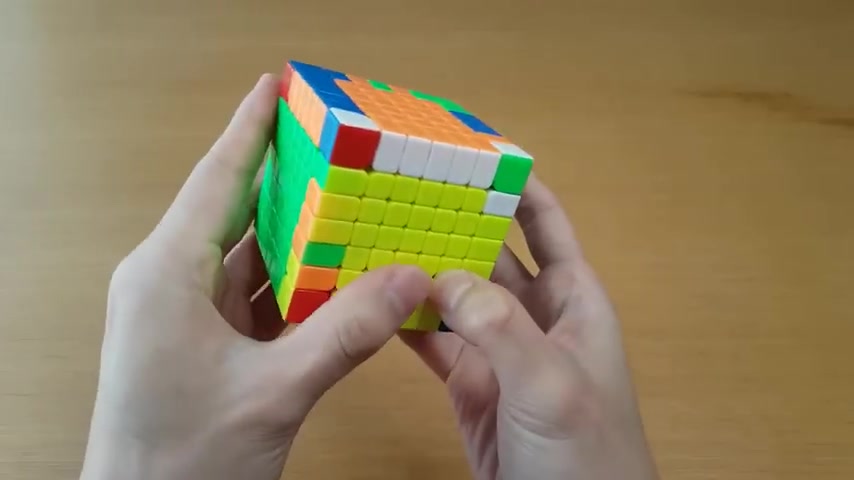
And then uh these are the unsolved edges and I will work on these next .
So I will try to solve the inner five by five parts first .
That's how I usually do it .
So like the white blue and then I can cycle back to join a yellow orange right here , which also solved this edge .
And then I can solve this orange green with these two .
So let that flip this side .
And then now I have the inner parts done and this is basically five by five now , so I can solve this and this and I'll put a yellow orange here .
Slice back .
A yellow orange here , slice back and then uh I can do these and this all together slice , flip slice .
All right .
Then it's just F two .
That was very lucky .
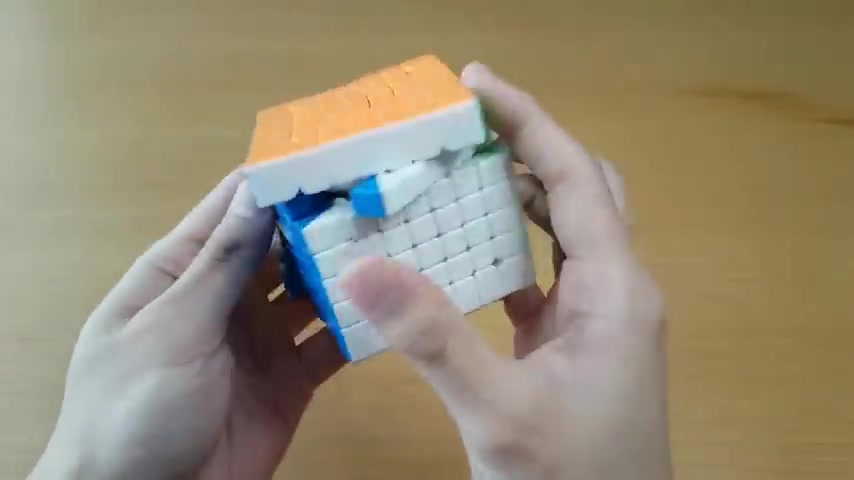
And then Oll and PLL Kevin Hayes told me to do that more consistent .
Oh No , whatever .
I don't know the rules .
Is this AD NF or is it a plus two or is it just like solved cube ?
Of course , is the only remaining WC a puzzle that is a cube ?
Nope square one is not a cube .
So as you guys know , I don't do SCU except in my stupid challenges , but I am gonna start color neutral with red because of course , I can neutral un cube .
It's so easy .
OK .
Next um How do I do this part ?
I use my own method that I made up when I tried to solve the cube .
And I don't actually know how you're supposed to do this but how I do it is like OK , this one needs to be orange on top .
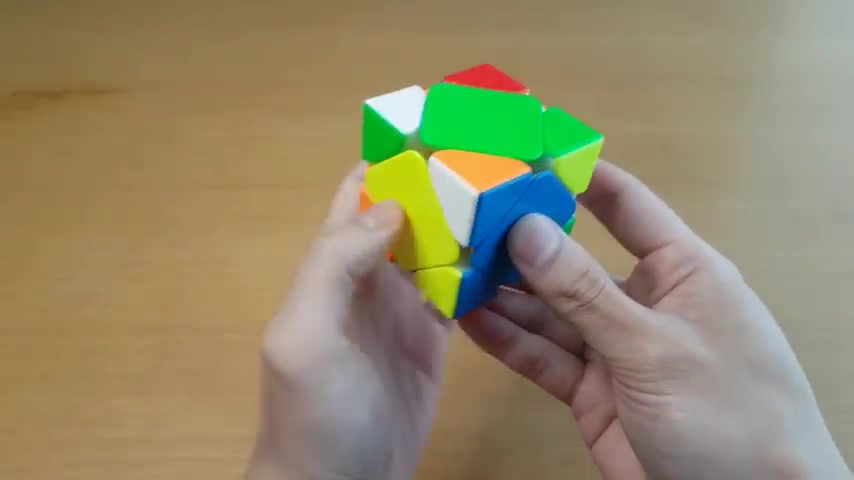
So I flip it like that and then I do like some setup moves to get the other one here and then flip it as well and then undo the setup moves and that orients these two .
OK .
This one needs to flip clockwise , counter clockwise .
There we go .
Corners done .
Uh two edges done .
I mean those are centers , not edges and then I always forgot how to orient during this part .
Ok .
Like this .
And I just do this three times .
Just kidding .
That was wrong .
Was it like this ?
I am so confused .
Oh , I need to hold the solved ones in my hand .
Ok .
Oh , that was so embarrassing .
There's this cube if you want to get faster and then you can check out my tutorials here .
Um , but don't learn from me for SCU because I don't know what I'm doing now .
You know what ?
I know exactly what I'm doing on Cube and I am proud of myself .
Are you looking for a way to reach a wider audience and get more views on your videos?
Our innovative video to text transcribing service can help you do just that.
We provide accurate transcriptions of your videos along with visual content that will help you attract new viewers and keep them engaged. Plus, our data analytics and ad campaign tools can help you monetize your content and maximize your revenue.
Let's partner up and take your video content to the next level!
Contact us today to learn more.